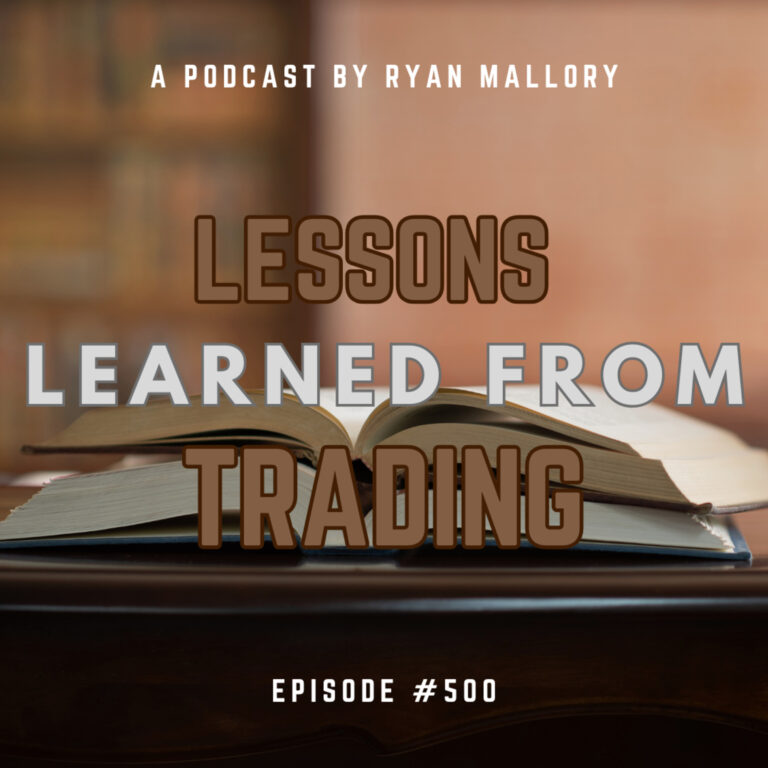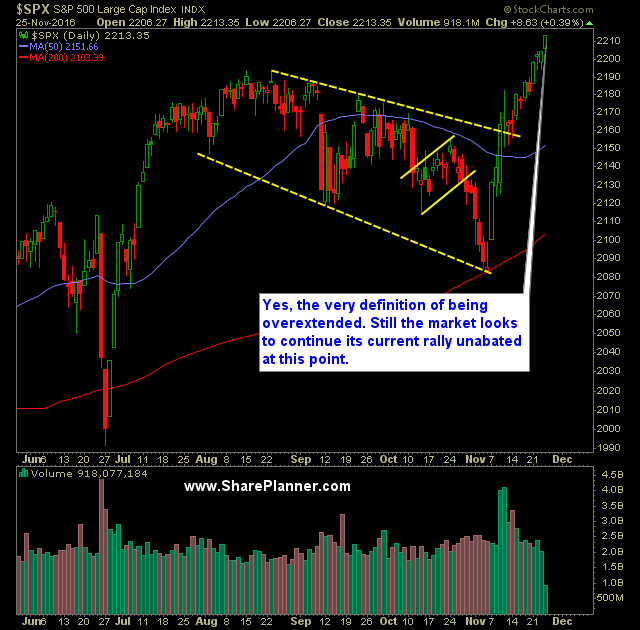Technical Analysis:
- The S&P 500 (SPX) traded higher in each of the four trading sessions last week, and closed at new all-time highs at 2213.
- With the election behind us, the market should start to turn its attention to the Federal Reserve and the eventual rate hike that will come on December 14th when the next FOMC statement is released.
- If it is anything like last December, it should create some jitters in the market as well as a potential selling catalyst that leads to a significant sell-off.
- SPDRs S&P 500 (SPY) volume faded off, as expected last week due to the Thanksgiving holiday week. It is worth seeing whether the buyers come back in force this week, or whether investors decide to begin booking profits.
- Some basing taking place in the CBOE Market Volatility Index (VIX). Bulls have been unable to put together so much as even a bounce on the index. Lows from August are in the crosshair this week.
- Weakness has prevailed in United States Oil Fund (USO) last week, with a steep sell-off on Friday. The inability to reach an agreement on production caps is dampening prospects for a rally higher.
- Russell 2000 (RUT) continues its historic run, rising for a 15th straight day on heavy, heavy volume.
My Trades:
- Added one new swing-trade position to the portfolio on Friday.
- Sold WMB on Friday at $30.12 for a 1.8% loss.
- I will look to add 1-2 new swing-trades to the portfolio today. As well as building some short exposure.
- I am currently 40% Long / 60% Cash
Chart for SPX:

Welcome to Swing Trading the Stock Market Podcast!
I want you to become a better trader, and you know what? You absolutely can!
Commit these three rules to memory and to your trading:
#1: Manage the RISK ALWAYS!
#2: Keep the Losses Small
#3: Do #1 & #2 and the profits will take care of themselves.
That’s right, successful swing-trading is about managing the risk, and with Swing Trading the Stock Market podcast, I encourage you to email me (ryan@shareplanner.com) your questions, and there’s a good chance I’ll make a future podcast out of your stock market related question.
In today's episode, at episode 500, I am diving into the lessons learned from trading over the last 100 episodes, because as traders we are evolving and always attempting to improve our skillset. So here is to episode 500, and to another 500 episodes of learning and developing as swing traders in the stock market!
Be sure to check out my Swing-Trading offering through SharePlanner that goes hand-in-hand with my podcast, offering all of the research, charts and technical analysis on the stock market and individual stocks, not to mention my personal watch-lists, reviews and regular updates on the most popular stocks, including the all-important big tech stocks. Check it out now at: https://www.shareplanner.com/premium-plans
📈 START SWING-TRADING WITH ME! 📈
Click here to subscribe: https://shareplanner.com/tradingblock
— — — — — — — — —
💻 STOCK MARKET TRAINING COURSES 💻
Click here for all of my training courses: https://www.shareplanner.com/trading-academy
– The A-Z of the Self-Made Trader –https://www.shareplanner.com/the-a-z-of-the-self-made-trader
– The Winning Watch-List — https://www.shareplanner.com/winning-watchlist
– Patterns to Profits — https://www.shareplanner.com/patterns-to-profits
– Get 1-on-1 Coaching — https://www.shareplanner.com/coaching
— — — — — — — — —
❤️ SUBSCRIBE TO MY YOUTUBE CHANNEL 📺
Click here to subscribe: https://www.youtube.com/shareplanner?sub_confirmation=1
🎧 LISTEN TO MY PODCAST 🎵
Click here to listen to my podcast: https://open.spotify.com/show/5Nn7MhTB9HJSyQ0C6bMKXI
— — — — — — — — —
💰 FREE RESOURCES 💰
— — — — — — — — —
🛠 TOOLS OF THE TRADE 🛠
Software I use (TC2000): https://bit.ly/2HBdnBm
— — — — — — — — —
📱 FOLLOW SHAREPLANNER ON SOCIAL MEDIA 📱
*Disclaimer: Ryan Mallory is not a financial adviser and this podcast is for entertainment purposes only. Consult your financial adviser before making any decisions.






